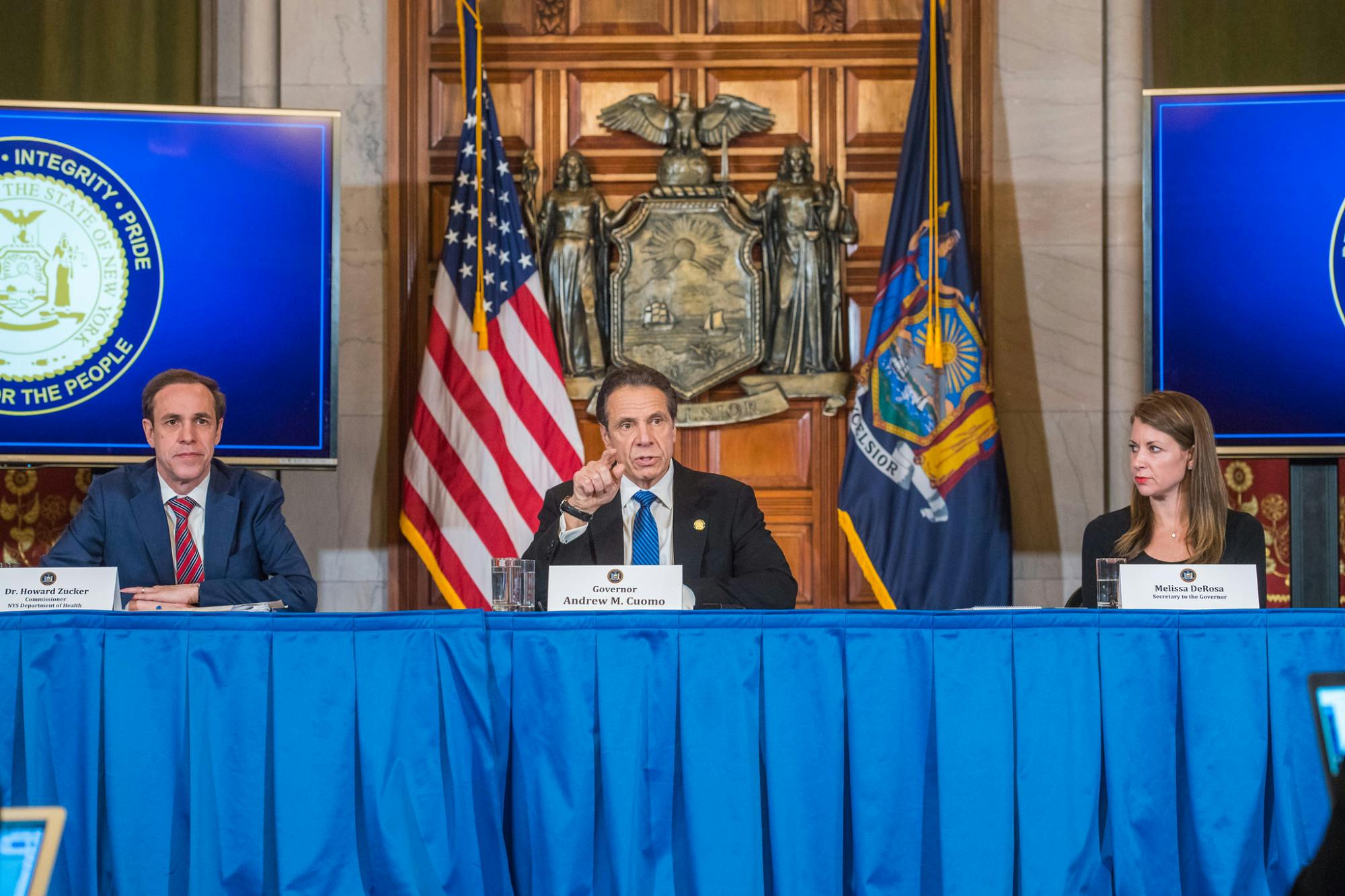Every day now, New York’s Governor Andrew Cuomo spends an hour or more before the press and television cameras, detailing horrifically bad and frightening news. And people love him for it.
How can this be?
Because in all times, but especially crisis times, what people need more than anything is strong communication from leadership. And Cuomo’s daily briefings are an outstanding example of excellent leadership communications. In fact, a couple of weeks ago, I attended a webinar on leadership communications in a time of COVID-19, and I was struck by how well the rules—intended for business leaders—applied to what the governor has been doing.
The webinar was organized and led by leaders from the Great Place to Work Institute (GPTW), including CEO Michael C. Bush. Bush, who has, in just a few years, taken GPTW from (unspoken) Great Place to Work for Straight White Male Knowledge Workers to (explicit) Great Place to Work For All, delivered some truly excellent advice for leaders on communicating during this difficult time. Listening to him, I realized how much of what he said applies equally to leaders of all stripes, whether organizational or political.
Leaders should frequently be communicating with all constituents
For CEOs, this might take the form of a brief weekly video. It doesn’t need to be fancy—in fact, it ought to be deliberately informal and personal, in both setting and style—no fancy backdrops, no reading off scripts. It is tremendously reassuring for employees to see the CEO in human form!
Cuomo, as I said, has been communicating daily. He talks in a friendly, folksy style, using notes rather than a teleprompter. He frankly exudes authenticity.
Leaders’ communications should explicitly recognize and address constituents’ concerns—and what is being done to tackle them
In this climate, employee concerns are, inevitably, going to include worries about their health and the health of their loved ones, as well as about their jobs and the state of the business. CEOs should talk both about long-term strategic plans and short-term fixes, including finding ways to provide short-term financial support for employees.
Cuomo recognizes viewers’ concerns first by providing the facts—which, as I write this, include nearly all bad news: cases of COVID-19, and the death toll, are rising; many people are out of work. He addresses the challenges we are facing unflinchingly, avoiding jargon or euphemism, then describes specific solutions being planned or in progress and how they might affect individuals.
Employees should be encouraged and given every opportunity to share their thoughts and ideas both about how they are feeling and how to address business or other problems
This means companies should be organizing an ongoing roster of discussions among employees and senior leadership, scheduled to ensure all employees can join, even that means a 3 a.m. time slot.
Ok, so far, Cuomo hasn’t scheduled any open meetings with constituents (that I know of), but he has made clear he listens to those who reach out to him. He also always spends a portion of his briefing discussing the role every individual plays in “flattening the curve.”
Leaders should understand that professionalism during this period may follow some different rules than it does during normal times.
One aspect of this is to recognize, as Bush put it, that in today’s reality, there is no such thing as “interruption” by a family member: “We want our employees to hug that child, to pet that puppy, to pick up that cat. The employees’ mental health and the mental health of the child or the pet come first right now. To ignore this fact will erode trust at the time you need it most.”
One of the warmest, most reassuring aspects of Cuomo’s briefings are the personal stories he always manages to inject. When he talks at length about bringing his daughters together for Sunday dinners where they, suspicious of his cooking, would pick at their meatballs and later everyone would get take-out Chinese or describes arguing with his brother, the reporter Chris Cuomo, on the wisdom of inviting their elderly mother to his house just now—well, he hasn’t actually petted a puppy, but he’s come awfully close.
The result of all this is that people find Cuomo’s briefings to be inordinately comforting—they are, apparently, tuning in in droves. Think about that—people are making a point to sit down and watch a politician give them the latest horrible news about a devastating and terrifying plague which is destroying not only people’s health but their livelihoods. Can there be a better argument for the role communications can play—when done right?
